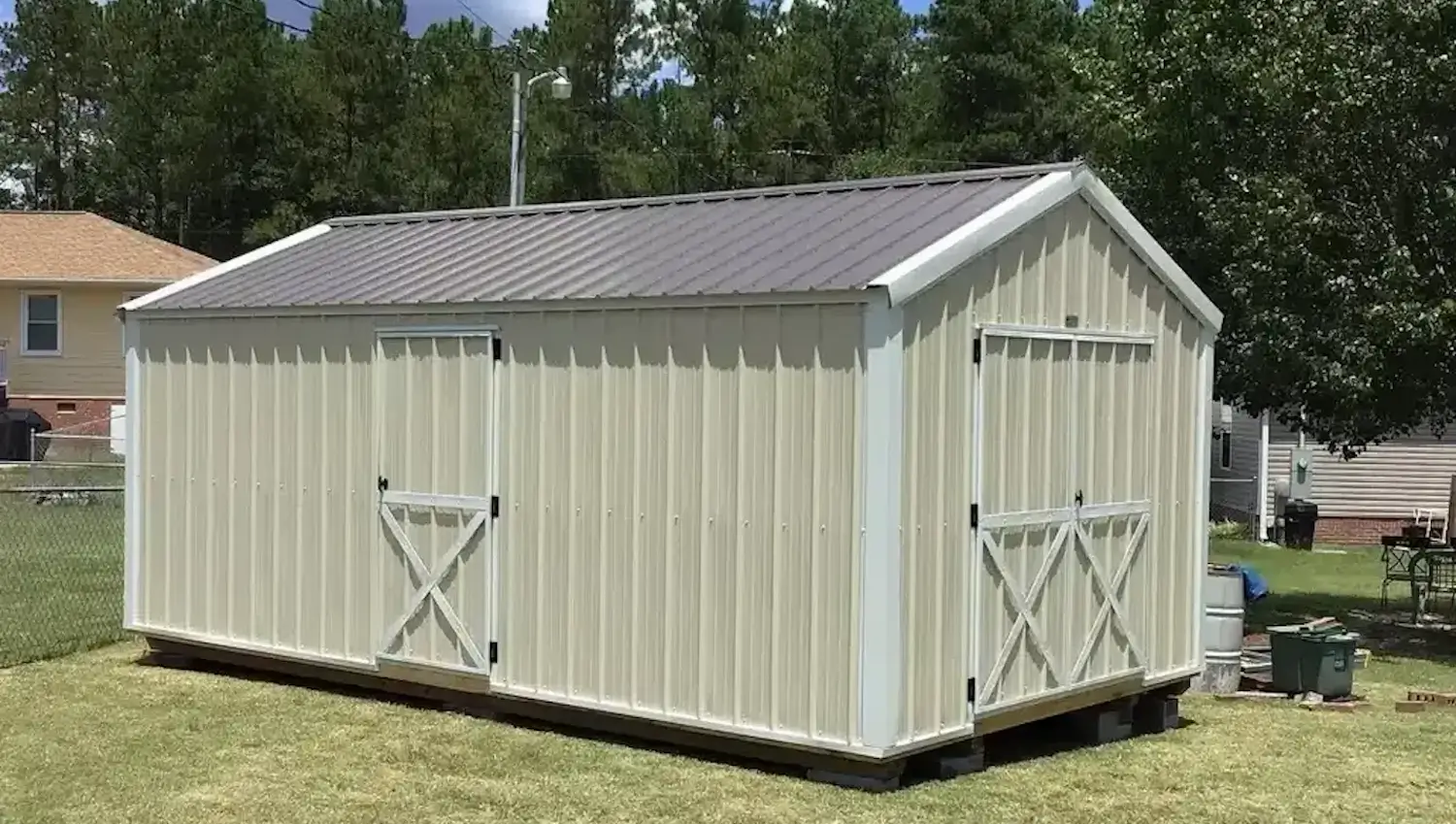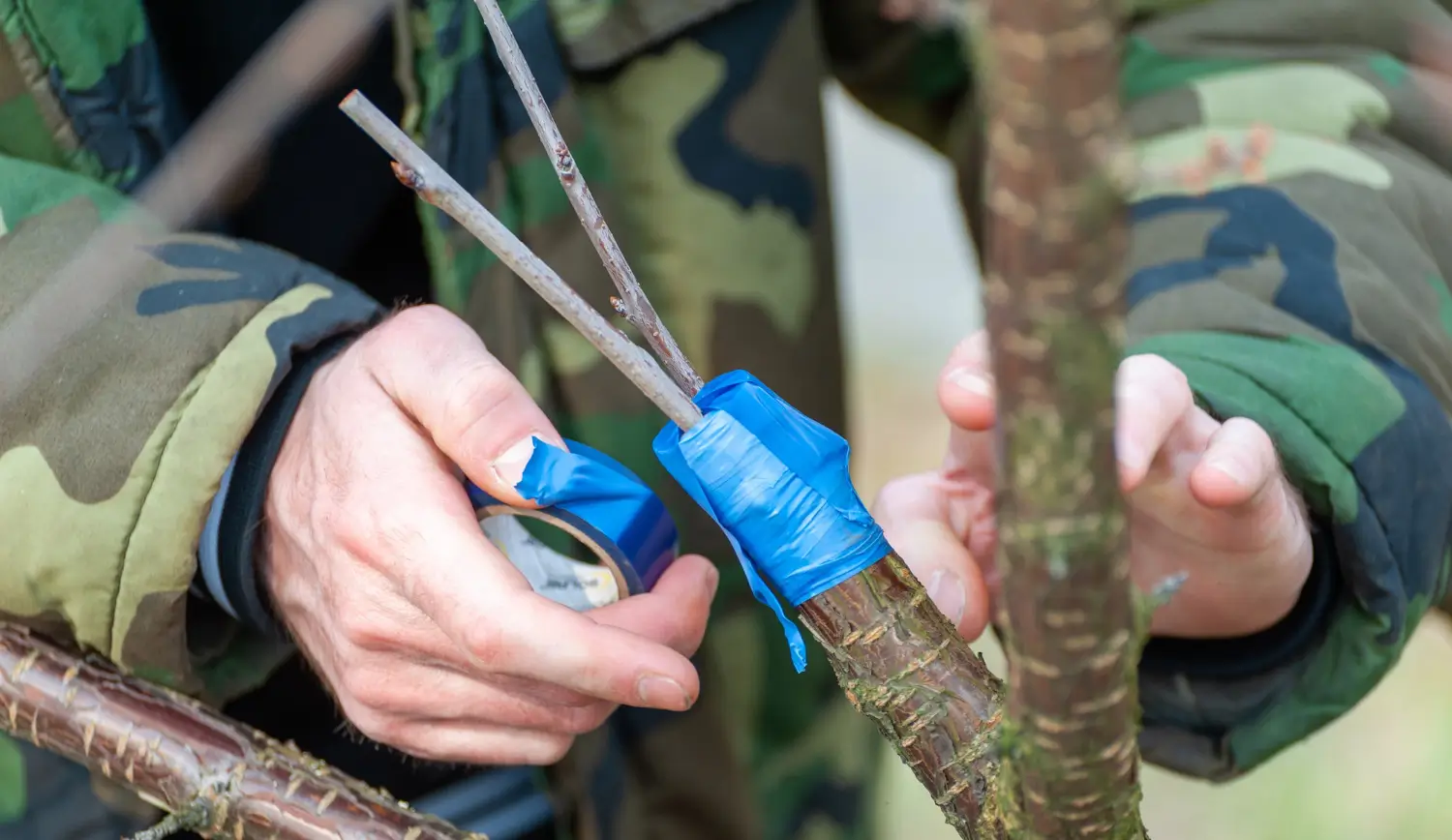
August 24, 2025

Grafting is a gardening technique that allows two different plants to grow together. This method has been used for centuries to improve plant health, increase yields, and create unique plant varieties. For example, a tomato plant can produce sweeter, juicier fruit while also being resistant to pests and diseases. Some trees can even grow multiple types of fruit on a single trunk. Grafting makes these results possible and continues to transform gardens and farms worldwide.
Some plants struggle to survive in poor soil, while others are highly susceptible to diseases. Gardeners typically use pesticides, fertilizers, or trial and error to overcome these challenges. However, grafting provides an alternative solution by combining the best traits of different plants. Growcycle offers various products that can assist gardeners with grafting techniques.
Grafting has been used for thousands of years, with its earliest records found in ancient China, Rome, and Egypt. Farmers in these civilizations discovered that grafting helped improve fruit trees by combining strong root systems with high-quality plant varieties. Instead of growing plants from seeds, which could produce unpredictable results, they used grafting to maintain desirable traits.
Over time, grafting methods spread and improved. Monks and botanists refined the technique in medieval Europe to grow better apples, pears, and other fruit trees. By the 18th and 19th centuries, scientists studied plant structures to understand why some grafts were more successful than others.
Grafting has become a precise, research-based method of farming and gardening. Scientists have improved grafting techniques, making it possible to combine different plant species with greater success. Grafting is widely used for fruits, vegetables, and ornamental plants, helping growers produce stronger, disease-resistant crops.
Grafting is a method of plant propagation that merges two plants using biological and physiological processes.
Several key components play a role in grafting:
The vascular tissues of the scion and rootstock must align precisely for the graft to succeed. These tissues transport water, nutrients, and growth hormones. If they are misaligned, the plant will not establish a proper connection, leading to graft failure.
When a graft is made, the plant triggers a wound-healing response. Several steps occur:
Plant hormones play a crucial role in this process:
These hormones help the graft heal and develop into a single, functioning plant.
Grafting is a versatile gardening technique. There are several methods, each suited for different plants and purposes. The right technique depends on factors such as plant type, growth stage, and desired outcome.
Cleft grafting is a widely used technique, especially for fruit trees. It allows a young, desirable scion to be grafted onto an older, well-established rootstock. This method is particularly useful when the rootstock is significantly thicker than the scion. It is commonly applied to apple, pear, and citrus trees and is best performed in early spring when the trees are just beginning to grow.
Whip grafting is commonly used for young trees and vines, where both the scion and rootstock are of similar thickness. It creates a strong, seamless graft union due to the large surface area of contact between the two plant parts.
Bud grafting is a method that uses a single bud instead of an entire scion. It is widely used for propagating roses, citrus trees, and stone fruit trees. This technique is ideal when only a few buds need to be transferred instead of a full branch.
| Grafting Method | Best For | Advantages | Limitations |
|---|---|---|---|
| Cleft Grafting | Fruit trees | Works on thick rootstocks | Requires careful alignment |
| Whip Grafting | Young trees and vines | Strong union | Needs precise cuts |
| Chip Budding | Roses, citrus trees | Uses minimal plant material | Works only on thin bark |
| T-Budding | Stone fruits | Easy and quick | Requires warm weather |
| Approach Grafting | Difficult-to-graft plants | Higher success rate | Requires more time |
Grafting is a great technique for gardeners who want to improve plant health, grow unique fruit varieties, or bring old trees back to life. Here are the main steps of grafting:
Choose a healthy, disease-free scion from a plant with the traits people desire, such as better fruit quality, disease resistance, or size. Ensure that the scion is from the same species or a closely related variety to ensure compatibility.
The rootstock should complement the scion in terms of growth habits and environmental adaptability. For example, select a rootstock known for resistance to specific pests or diseases or one that thrives in the soil type. Choose a slightly thicker rootstock than the scion to make the grafting process easier.
Essential Tools and Materials
The best time to graft is typically during early spring when the sap flow is active. For most deciduous trees, this period is when they begin to show signs of growth but before leaves fully develop.
Here is a breakdown of each step in the grafting process:
After grafting, the real work begins in maintaining the graft and addressing any issues that may arise. Here are some common problems and their solutions:
Graft Failure
Poor Graft Union
Infection
Post-Grafting Care
Grafting is a powerful gardening technique that allows gardeners to combine the best traits of different plants, creating stronger, more productive, and healthier gardens.
Grafting enables gardeners to take advantage of the strengths of different plant varieties by joining them together. For example, gardeners can combine a fruit tree’s high-yielding variety (scion) with a rootstock that is resistant to disease or pests. This way, the grafted plant benefits from both the scion's superior fruit production and the rootstock's resilience.
Grafting can also significantly impact plant health and growth. By using a rootstock with strong disease resistance and vigorous growth, gardeners can increase the plant's overall health and speed of growth. This is particularly beneficial when growing crops or fruit trees, as it can result in faster growth, improved root systems, and higher yields.
Grafting also brings numerous economic and environmental advantages. It can reduce the need for expensive chemical treatments like pesticides and fertilizers for gardeners.
Additionally, grafting can reduce the need for replanting over time. Since grafted plants tend to be hardier and more resilient, they are less likely to die from disease or harsh environmental conditions. This results in lower maintenance costs and a more sustainable approach to gardening.
While grafting offers numerous benefits, gardeners should also consider several challenges and limitations to ensure success.
One of the key factors for successful grafting is selecting compatible plant partners. Not all plants can be grafted onto each other, as some species have incompatible genetic traits that prevent the graft from taking.
For example, some plants may have different growth rates, cellular structures, or immune responses that hinder the union of scion and rootstock. To avoid graft incompatibility, it's crucial to choose plants that are genetically similar or closely related.
Environmental conditions play a significant role in grafting success. Weather, soil conditions, and seasonal changes can all affect how well a graft takes. For example, the graft may fail due to stress if grafting is done during extreme heat or frost. Similarly, poor soil that lacks proper nutrients or drainage can hinder the grafted plant's growth.
To improve success rates, gardeners should graft during the appropriate season, typically in early spring, when conditions are ideal for plant growth. Adjusting techniques to local weather and soil conditions can also help. If the soil is too dry, ensure the grafted plant receives adequate moisture and use mulching to maintain humidity.
Grafting requires precision and practice. There can be a steep learning curve for beginners, as making clean, accurate cuts is essential for grafting success. Inaccurate cuts can result in poor cambium alignment, leading to graft failure.
Beginners can improve their skills by starting with simpler techniques, like whip grafting, before moving on to more complex methods. Practicing on less expensive plants or using rootstocks and scions from more forgiving plants can also help. Watching tutorials and attending workshops can provide useful hands-on experience.
What are the 4 types of grafting in plants?
The four main types of grafting are Cleft Grafting, Whip (or Splice) Grafting, Bud Grafting (Chip and T-Budding), and Approach Grafting.
What is the best grafting method?
The best grafting method depends on the plant type and goal. Cleft grafting is often best for fruit trees, while whip grafting is ideal for younger plants. Bud grafting works well for ornamental and citrus trees.
Which plant is best for grafting?
Commonly grafted plants include fruit trees like apples, pears, citrus, stone fruits, and some roses and certain vegetables like tomatoes. For the best results, choose closely related plants.
Grafting is a powerful gardening technique that helps gardeners combine the best traits of different plants. By merging qualities like disease resistance, improved fruit quality, or even reviving old trees, grafting can improve plant health and increase yields. Gardeners can carefully choose compatible plants and use the right methods to create stronger, more productive plants that do well in various environments. Explore Growcycle to learn more about various grafting techniques for healthy plant production.
Disclaimer: This material is for informational purposes only and should not be relied on for legal, medical, financial, or any other form of professional advice.